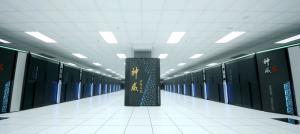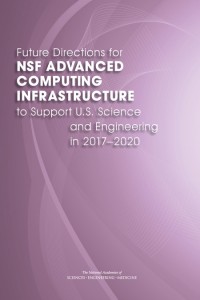Peter Lobner
The latest TOP500 ranking of the world’s 500 most powerful supercomputers was released on 20 June 2016. Since June 2013, China’s Tianhe-2 supercomputer topped this ranking at 33 petaflops [PFLOPS; 1015 floating-point operations per second (FLOPS)]. Now there is a new leader, and once again it is a Chinese supercomputer the Sunway TaihuLight.
 Source: Jack Dongarra, Report on the Sunway TaihuLight System, June 2016
Source: Jack Dongarra, Report on the Sunway TaihuLight System, June 2016
Details are available at the TOP500 website:
On this website, Michael Feldman commented on the new leader in the TOP500 ranking:
“A new Chinese supercomputer, the Sunway TaihuLight, captured the number one spot on the latest TOP500 list of supercomputers released on Monday morning at the ISC High Performance conference (ISC) being held in Frankfurt, Germany. With a Linpack mark of 93 petaflops, the system outperforms the former TOP500 champ, Tianhe-2, by a factor of three. The machine is powered by a new ShenWei processor and custom interconnect, both of which were developed locally, ending any remaining speculation that China would have to rely on Western technology to compete effectively in the upper echelons of supercomputing.”
Remarkably, the Sunway TaihuLight’s significant performance increase is delivered with lower power consumption than Tihane-2: 15,371 kW for TihauLight vs. 17,808 kW for Tihane-2.
You can read Michael Feldman’s complete article at the following link:
https://www.top500.org/news/china-tops-supercomputer-rankings-with-new-93-petaflop-machine/
You also can read the press release for the new TOP500 listing at the following link:
You’ll find the list of the top 10 supercomputers at the following link:
https://www.top500.org/lists/2016/06/
From here, you can navigate to the complete listing of all 500 supercomputers by going to the grey box titled RELEASE and selecting The List.
U.S supercomputers Titan and Sequoia are ranked 3rd and 4th, respectively, each with about 17% of the RMAX rating of the Sunway TaihuLight and half the power consumption. In comparison, the Sunway TaihuLight is significantly more power efficient than Titan and Sequoia.
15 July 2016 Update: National Science Foundation (NSF) examines the future directions for NSF advanced computing infrastructure
The NSF recently published the new report entitled, “Future Directions for NSF Advanced Computing Infrastructure to Support U.S. Science and Engineering in 2017-2020.”
As described by the authors, this report “offers recommendations aimed at achieving four broad goals: (1) position the U.S. for continued leadership in science and engineering, (2) ensure that resources meet community needs, (3) aid the scientific community in keeping up with the revolution in computing, and (4) sustain the infrastructure for advanced computing.”
The report addresses the TOP500 listing, pointing to several known limitations, and concludes that:
“Nevertheless, the list is an excellent source of historical data, and taken in the aggregate gives insights into investments in advanced computing internationally.”
The NSF report further notes the decline in U.S. ranking in the TOP500 list (see pp. 59 – 60):
“The United States continues to dominate the list, with 45 percent of the aggregate performance across all machines on the July 2015 list, but it has dropped substantially from a peak of over 65 percent in 2008. NSF has had systems either high on the list (e.g., Kraken, Stampede) or comparable to the top systems (i.e., Blue Waters), reflecting the importance of computing at this level to NSF-supported science. Although there are fluctuations across other countries, the loss in performance share across this period is mostly explained by the growth in Asia, with China’s share growing from 1 percent to nearly 14 percent today and Japan growing from 3 to 9 percent.”
The report puts TOP500 rankings in perspective as it addresses future national scale advanced computing needs and operational models for delivering advanced computing services.
If you have a MyNAP account, you can download this report for free from National Academies Press (NAP) at the following link:
